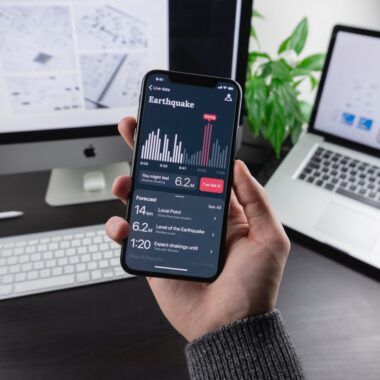Development of layouts and functional prototypes of user interfaces

User interfaces have the ability to change the way people interact with technology. They are a representation of how we use and interact with technology.
The development of layouts and functional prototypes of user interfaces is a vital part of UX design. With this process, designers can gain insight into what their users are looking for in terms of functionality, aesthetics and content.
In order to develop layouts and functional prototypes of user interfaces, designers need to be able to visualize their ideas before they start creating them. This allows them to identify what they should focus on first, which is crucial in creating a successful product.
User interfaces are the most important part of any technology. They are what users interact with, and they are the first impression that companies want to create for their products.
Layout designers have a lot of freedom in designing user interfaces because they can make decisions that affect every aspect of the product’s design. This includes deciding on colors, typography, and layout.
Functional prototypes allow designers to create a more accurate representation of how an interface will actually look and function. This helps them make changes before moving into production.
The process of designing user interfaces has been a long and tedious one. It involves a lot of planning and research, which is why the development of layouts and functional prototypes of user interfaces is important.
The process of creating layouts and functional prototypes depends on the type of product that you are designing. For instance, if you are designing a website, it will be easier to create wireframes or prototypes with HTML and CSS. If you are making an app, then it will be more difficult to create wireframes or prototypes with HTML and CSS because apps require code to function properly.
The development process can vary depending on the type of product that you are developing but most products go through the following steps:
– Research: Gathering information about your target audience, competitors, market trends, customer feedback
– Conceptualization: Creating ideas for how the product should look like – Design: Sketching ideas or creating mockups in Photoshop or Illustrator – Development: Developing
The paper also includes a discussion on the role that layout prototyping plays in design practice today, with particular focus on its importance in digital product development.
The goal of this paper is to explore the development of layouts and functional prototypes of user interfaces (UI) for digital products.
The paper will be divided into three main parts: the first part will provide an overview of the process and tools used, while the second part will focus on a particular case study and discuss the design decisions made, while the third part will provide some conclusions.
The development of layouts and functional prototypes of user interfaces is a vital component of the design process. It is important to have clear, precise and understandable designs in order to create successful products.
The design process is a difficult one to get through, as it often involves a lot of trial and error. This is where the development of layouts and functional prototypes come in handy. These prototypes provide designers with an idea on how their designs may look like or function with various interactions, inputs, and outputs.
Designing layouts and functional prototypes is one of the most important aspects in creating a user interface for an application or website. The process involves creating mockups, wireframes, and prototypes before finally developing the final product.
The first step in designing layouts is to create mockups that show how the layout would look like when implemented on a device or website. This process involves brainstorming ideas, sketching out designs, using tools such as Axure RP Pro to create wireframes that represent what the final product would look like on different devices (mobile phones, tablets), using tools such as Principle to visualize screens in order to understand what they should look like when implemented on different devices (desktop computers). The next step
The development of layouts and functional prototypes of user interfaces is one of the most important tasks in the UX process. This is because it provides a strong foundation for the design team to build on. It also helps to create a better user experience by providing clear direction and guidelines.
The layout and functional prototypes are crucial steps in the UX process, which help designers to define an interface that can be used as a starting point for building new designs. The following are some of the most important benefits of this step:
– It provides a strong foundation for designers to build on.
– It helps to create a better user experience by providing clear direction and guidelines.
This is a highly interactive section where you will be given some brief information about the development of layouts and functional prototypes of user interfaces.
The first layout prototype is the simplest one. It only consists of a single button and a text field. The second layout prototype has two buttons – one for adding new content, the other for deleting it. The third layout prototype has three buttons – one for adding new content, one for deleting it, and another to edit the text in the text field.
